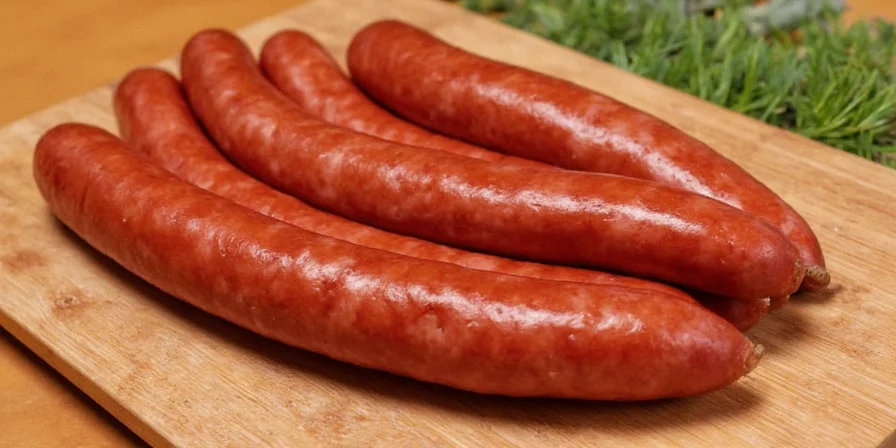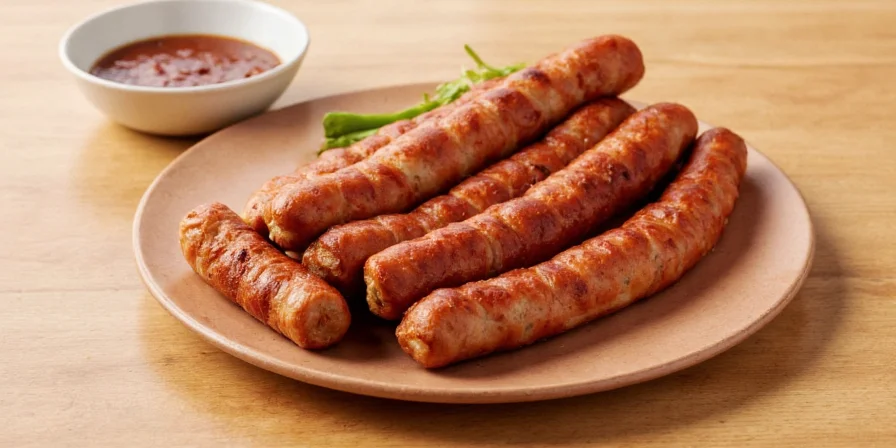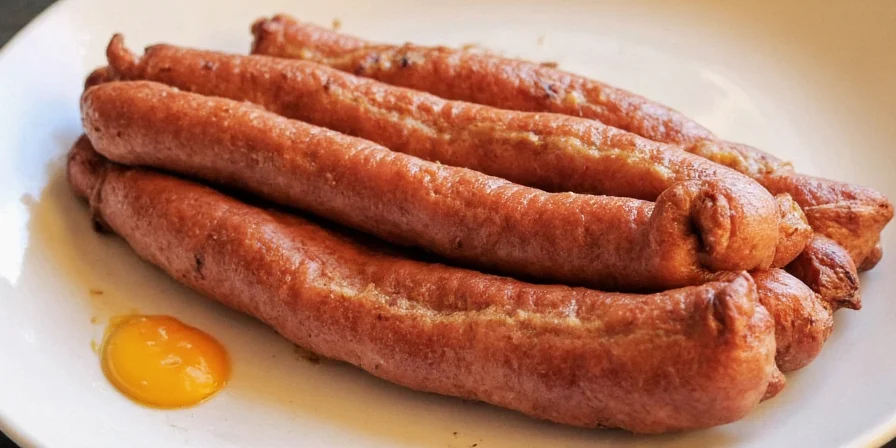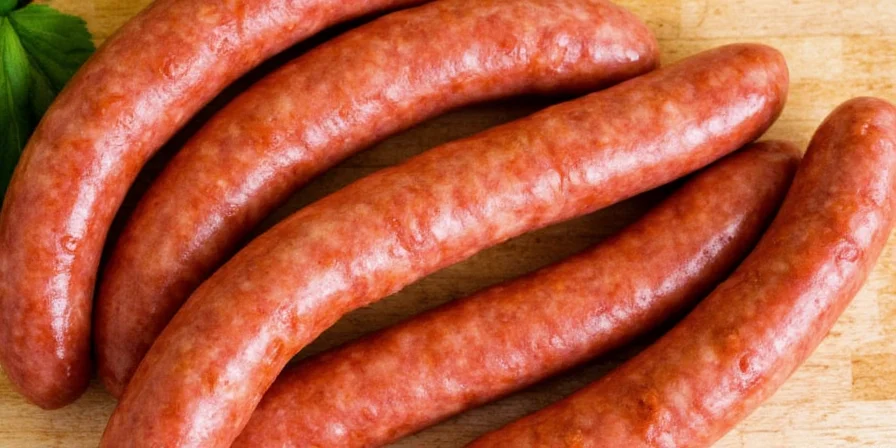Thüringer Rostbratwurst: A Spicy Journey Through Germany’s Sizzling Sausage Tradition
Table of Contents
- Introduction
- A Slice of History
- The Spice Inside the Bite
- Grilling Like a German: Tips & Tricks
- Pairing Perfection: Beer, Bread & Beyond
- DIY at Home: Crafting Your Own Thüringer Brats
- Thüringer Goes Global: International Twists
- Conclusion
Welcome to the World of Thüringer Rostbratwurst
If sausages had a royal family, the Thüringer Rostbratwurst would be wearing a crown made of garlic cloves and bay leaves. This iconic German sausage is more than just meat in a casing — it's a culinary celebration of spice, tradition, and grilled glory.
In this blog post, we're diving deep into the smoky, savory world of the Thüringer bratwurst. Whether you're a seasoned chef or someone who once mistook paprika for cinnamon (no judgment), this guide has something for everyone. So grab your tongs, loosen your belt, and let’s get spicy!

A Slice of History: From Medieval Markets to Modern Grills
The story of Thüringer Rostbratwurst begins not with a flash, but with the quiet sizzle of centuries-old tradition. First mentioned in 1404 in the town of Coburg, this sausage has been a staple of Thuringian cuisine for over 600 years. That’s older than most modern countries!
Made from coarsely minced pork and seasoned simply with salt, pepper, and marjoram, the Thüringer bratwurst was born out of necessity — a way for butchers to use every part of the pig. Over time, what started as practicality became pride, and today, the sausage holds a Protected Geographical Indication (PGI) status under EU law. Only sausages produced in Thuringia can legally bear the name.

The Spice Inside the Bite: What Makes It Special?
When it comes to flavor, Thüringer Rostbratwurst plays it simple — and that’s where its strength lies. Let’s break down the magic ingredients:
- Pork: Usually a mix of shoulder and belly for the perfect fat-to-meat ratio.
- Salt & Pepper: Classic seasoning, but never too shy.
- Marjoram: The star spice that gives it that unmistakable earthy aroma.
Unlike other German bratwursts, Thüringer doesn’t mess around with fancy herbs or fillers. It’s all about purity of flavor and texture. No breadcrumbs, no water — just real meat and a handful of spices.
| Ingredient | Quantity | Role |
|---|---|---|
| Pork Shoulder | 70% | Provides structure and chew |
| Pork Belly | 30% | Adds juiciness and flavor |
| Salt | 1.5% | Preserves and enhances taste |
| Black Pepper | 0.3% | Warm, slightly spicy kick |
| Marjoram | 0.2% | Signature aromatic note |

Grilling Like a German: Tips & Tricks
Cooking a Thüringer Rostbratwurst isn’t rocket science — but if done right, it feels like culinary alchemy. Here are some pro tips to get that perfect char and juicy center:
- Preheat Your Grill: Aim for medium heat — too hot and you’ll burn the outside before the inside cooks.
- Don’t Puncture the Casing!: Trust us, you don’t want to lose all those juices.
- Use Tongs, Not a Fork: Gentle handling keeps the sausage intact.
- Rotate Frequently: For even browning and a beautiful sear.
- Rest Before Serving: Let it sit for 2–3 minutes so the flavors settle in.
Bonus hack: Brush the sausage lightly with oil or beer before grilling to add flavor and prevent sticking.

Pairing Perfection: Beer, Bread & Beyond
You wouldn't wear socks without shoes, and you shouldn't eat a Thüringer bratwurst without the right sidekicks. Here’s how to build the ultimate bratwurst experience:
- Bread: A fresh pretzel roll or rye bread adds crunch and balance.
- Condiments: Mustard is non-negotiable. Try Bavarian sweet mustard for an extra kick.
- Beer: Pair with a Helles lager or a wheat beer to cut through the richness.
- Sides: Sauerkraut, potato salad, or grilled onions keep things hearty.

DIY at Home: Crafting Your Own Thüringer Brats
Feeling adventurous? Why not make your own Thüringer Rostbratwurst at home? Here’s a simplified version of the process:
What You’ll Need:
- 500g pork shoulder
- 150g pork belly
- 7g salt
- 1.5g black pepper
- 1g dried marjoram
- Natural hog casings (soaked overnight)
How to Make It:
- Chop the pork into 1-inch cubes.
- Grind using a coarse plate, then pulse in a food processor for texture.
- Mix with salt, pepper, and marjoram. Chill for 30 minutes.
- Stuff into casings, twisting into links.
- Refrigerate for 1 hour before cooking.
Voilà! You’ve just joined the ranks of sausage-making royalty.

Thüringer Goes Global: International Twists
While the traditional Thüringer Rostbratwurst remains a beloved classic, chefs around the world have been giving it creative makeovers. Check out these global variations:
| Country | Twist | Description |
|---|---|---|
| USA | BBQ-Thüringer | Smoked with hickory and glazed with tangy barbecue sauce |
| Mexico | Chili-Marjoram Brat | Infused with smoked jalapeño and cumin for a spicy kick |
| Japan | Wasabi-Ginger Brat | Mildly spiced with a hint of ginger and served with wasabi mayo |
| India | Garam Masala Brat | Spiced up with cardamom, clove, and coriander for a warm twist |

Conclusion: The Heat Never Dies
Whether you’re eating it off a paper plate at a German beer garden or crafting your own version in your backyard, the Thüringer Rostbratwurst is more than just a sausage — it’s a symbol of culinary heritage, community, and good old-fashioned flavor.
From its humble origins to its current cult status, this sausage continues to sizzle across borders and palates alike. So next time you see one on the menu, don’t hesitate. Grab it, grill it, enjoy it — and remember, life is better with a little smoke, spice, and a whole lot of marjoram.












 浙公网安备
33010002000092号
浙公网安备
33010002000092号 浙B2-20120091-4
浙B2-20120091-4